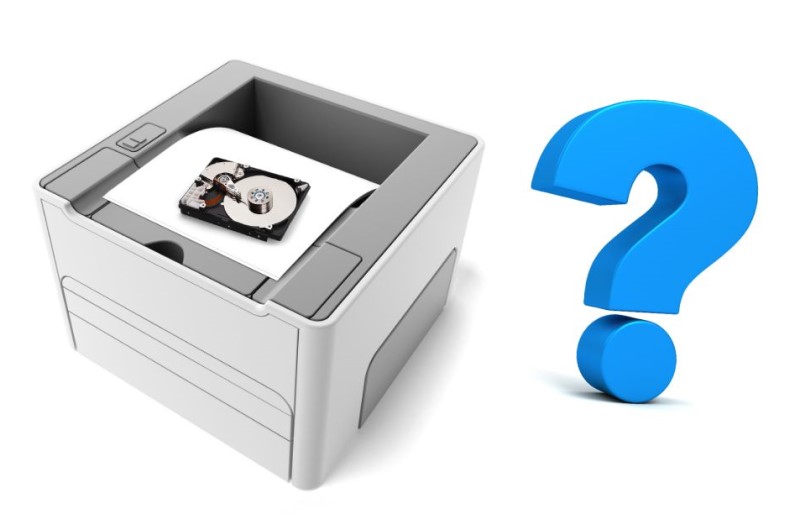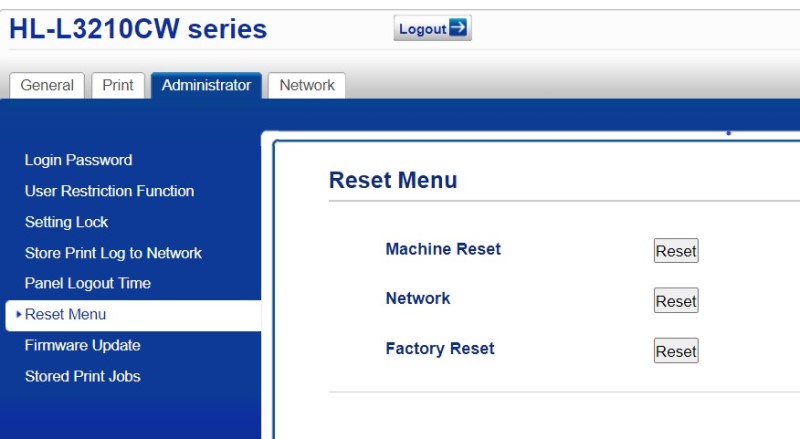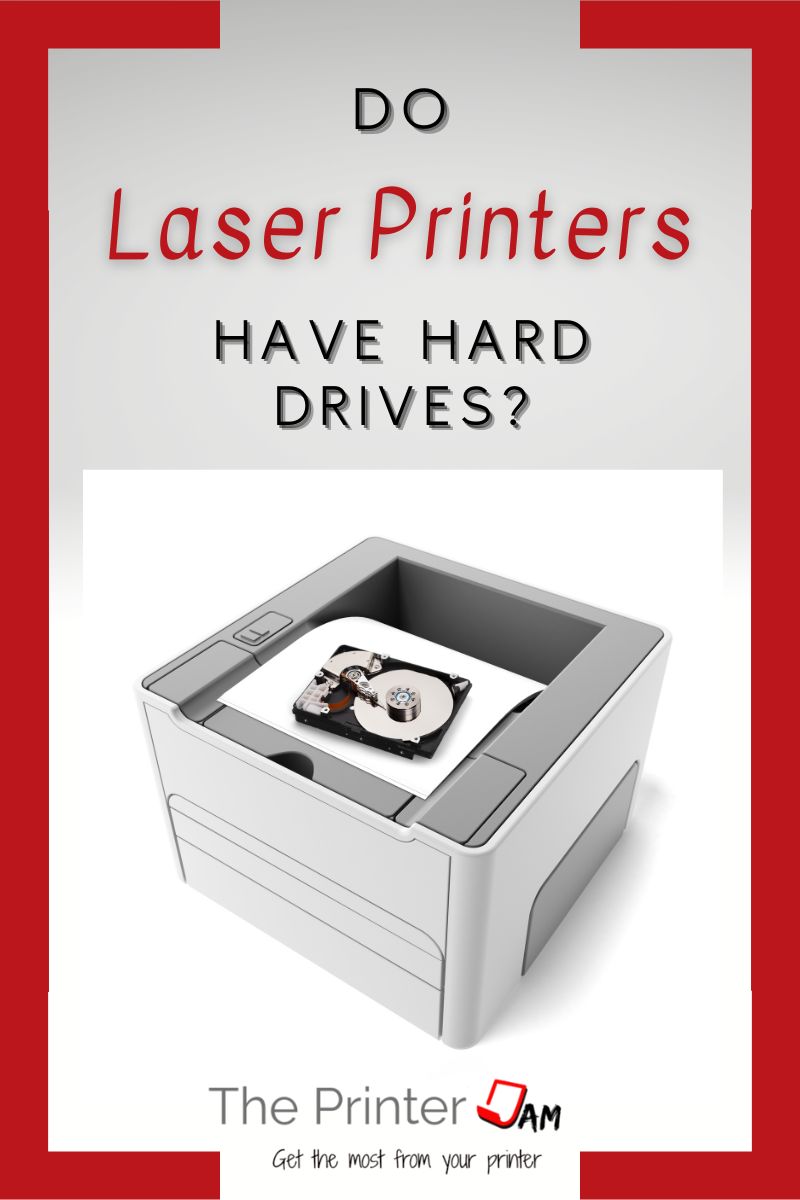
Laser printers for home use do not have hard disk drives (HDD) whether it’s HP, Canon, Lexmark, Brother, or another brand. Instead laser printers use flash type memory similar to SD cards or USB drives.
On the other hand laser printers for business use do have optional hard drives. For example, HP Laserjet Enterprise M506n has an optional 500GB HDD. The hard drive must be purchased separately.
Adding a hard drive increases performance when scanning or printing. It also adds features such as storing frequently printed documents or forms.
Production type laser printers are the only ones to come with a HDD as standard equipment. Even if you wanted a HDD for your home laser printer they are not available.
Laser printers still require memory to function so Laser printers come with between 32 MB and 1 GB of memory.
All-in-one laser printers tend to have more standard memory than printer only versions. Still, they are able to scan and copy without a HDD. Only business or production type all in ones use hard drives.
How to Tell If Your Printer has a HDD
The simplest way to tell if your laser printer has a hard drive is to print a config sheet. Look for a HDD under the options list. Alternatively, look in the memory section. It will list the available RAM and HDD capacity if one is installed.
Specifications or datasheets for your printer are available online from the manufacturer. However, few laser printers come standard with a HDD.
Most laser printers have an optional HDD. So the only way to know for sure is to print a config sheet. Or physically look inside your printer.
Removing Stored Information
While laser printers for home use don’t have HDD’s, your data still resides in a laser printers memory. The most recent scanned or printed documents will be present in your printers memory. Also, network data such as WiFi password or scan locations are stored.
While a laser printer can’t keep every page ever printed in memory, the last few pages that were printed or scanned remain in its memory banks.
How many pages are stored is determined by how much memory your laser printer has and the size of the print job.
Text documents take up little room so 100 or more pages can be stored if your printer has 1 GB of memory. On the other hand images take up more memory and a few pages quickly use up 32 MB of memory.
If you are concerned about your data existing in a laser printer. Then you can send several unimportant documents to your laser printer. As new print jobs arrive, previous ones are overwritten.
Scanning and printing use different portions of memory. So if you have an all-in-one laser printer then scan several inconsequential images to overwrite previous scanned images.
Factory Reset Data
Before you sell, give, or throw away your laser printer you should reset all data. If your printer is equipped with a HDD it will have a menu to format the hard drive or initialize disk.
Laser printers with or without hard drives have the ability to reset the printer to factory default. This clears any network data and user settings.

Summary
Laser printers for home use don’t have hard drives but the most recent jobs remain in the printers memory. Unplugging power doesn’t clear these print or scan jobs. Only new jobs overwrite this data.
Laser printers for businesses can use hard drives to improve performance or add features. A config sheet will tell you whether your laser printer has a HDD. A HDD needs initialized or formatted to wipe any confidential information.
Removing any personal data from your laser printer before getting rid of it is the best practice. Knowing whether or not your laser printer has a HDD is important if you plan or selling or giving away you printer.
FAQ
Inkjet and laser printers for home use don’t have hard drives. Business class printers for offices have optional hard drives. Only production type printers come with hard drives.
Laser printers with optional hard drives store hundreds of recent printed and scanned documents. If your laser printer doesn’t have a HDD it will still store recent printed and scanned documents. Instead of hundreds of pages, it will only have 10 or less pages. All laser printers store information about Wifi passwords or scan locations.
HP enterprise printers offer optional HDD. Other HP inkjet and laser printers don’t have hard drives.
Hard drives don’t use lasers. They use a tiny magnetic reed switch. Optical drives for DVD’s and CD’s use a laser to read/write.

The Copier Guy, aka Dave. I’ve worked on scanners, printers, copiers, and faxes since 1994. When I’m not fixing them I’m writing about them. Although, I’m probably better at fixing them. I’ve worked with every major brand. As well as several types of processes. If it uses paper I’ve probably worked on one.





